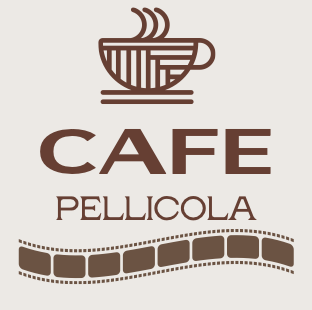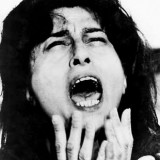Individualism vs. determinism is it truly up to the individual to change his destiny or is it all predetermined?
 Anna Magnani in an emotion explosion
Anna Magnani in an emotion explosion
In his second film Mamma Roma, Pier Paolo Pasolini is constantly moving between these two extreme poles. The story, brings about Pasolini’s typical characters on the margins of life as skillfully represented by the role of Anna Magnani, a Roman prostitute that tries hard to do a career change and at the same time ensure a better life for her son. Some say, Pasolini is in fact using Mamma Roma as analogy to all Italy, by putting a blaming finger to the responsibility of the state and the church that abandoned the struggling poor.
In some aspects, you may find typical themes to Pasolini’s first film Accatone. In both films Sergio Citti plays a local pimp who tries in vein to better his poor existence in Rome’s slums. The Neorealist rough reality in both films is brought up into an epic expression, as if to say: nothing’s new here this is an eternal human condition – by using classic music as soundtrack: Bach in Accatone and Vivaldi in Mamma Roma.
 The Last Supper by Leonardo Da Vinci
The Last Supper by Leonardo Da Vinci
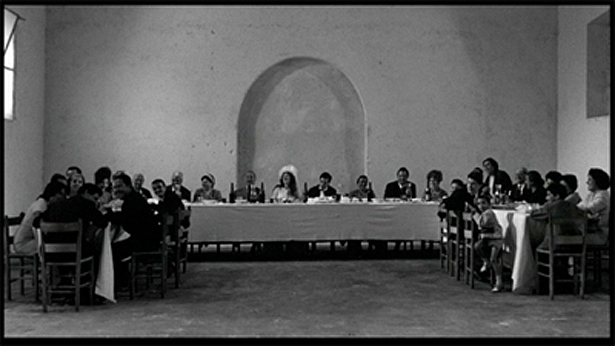 Pasolini’s opening scene in Mamma Roma
Pasolini’s opening scene in Mamma Roma
Another technique to amplify the epic portrayal of the characters is the strong visual influence from classic artworks such as the first scene positioned as The Last Supper by Leonardo Da Vinci; or when Ettore, strapped in his bed, is closely expressed as Andrea Mantegna’s The Lamentation over the Dead Christ.
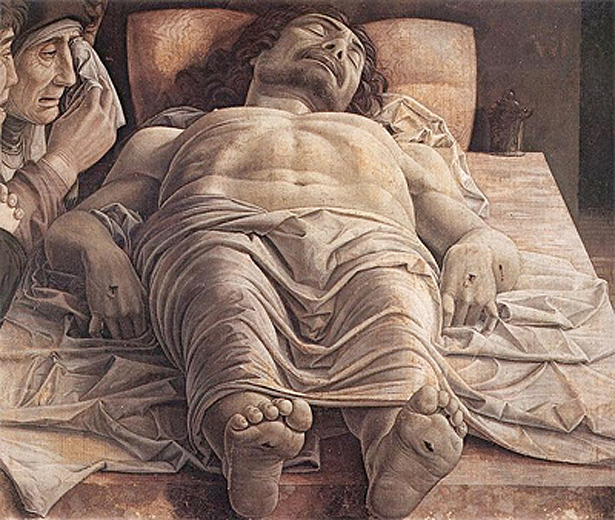 The Lamentation over the Dead Christ by Andrea Mantegna
The Lamentation over the Dead Christ by Andrea Mantegna
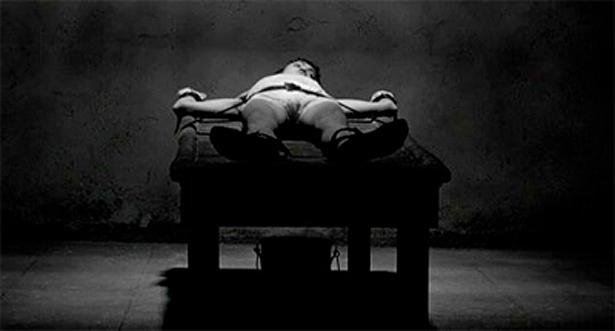 Ettore Garofolo in Pasolini’s Mamma Roma
Ettore Garofolo in Pasolini’s Mamma Roma
I especially liked the night scenes where Anna Magani is shown walking the dark road and brisk encounters with clients, friends, are woven into her long monolog. I found these scenes as an allegory to life itself (road of life) and the attempt to make sense of it despite the pitfalls.
The son, Ettore (Ettore Garofolo) brings about an authentic portrayal of a son who grew up away from his mother and they both meet again in his teens, he tries hard to both understand his mother as well as rebel and find his voice. Interestingly, because of the detachment, Mamma Roma (Magnani) still tries to compensate for lost years and treat him as a young boy, if you consider that scene where Ettore is shown riding a carousel with Mamma Roma watching.
Looking outside the film, we know that Pasolini had a very close relationship with his mother; and within this context you could interpret some of the mother-son scenes such as the dance scene as quite on the intimate side.
Throughout the film you will see three visual signifiers: the open fields, the new white buildings and the ruins of old aqueducts. These elements help paint a picture of a society in transition from old to new, from Roman waterways that provided life to the city – to ruins indicating figurative death represented by the lifeless white buildings and the new gospel of consumerism Pasolini fought hard against.
The film brings about a simple message of human basic need to create a better future despite reality’s constant constraints. If it was a direct route to success for everybody then: a) sense of accomplishment will be lost and every action will become a habit with a predicted outcome b) movies will lose their conflict-driven storyline and become banal and c) you tell me?
